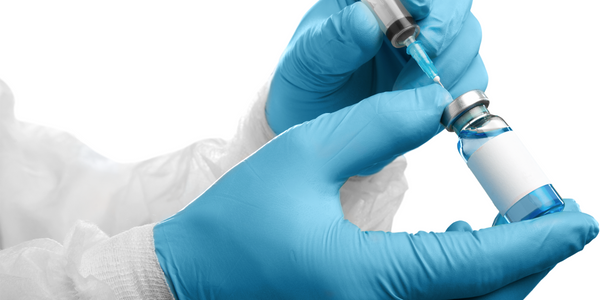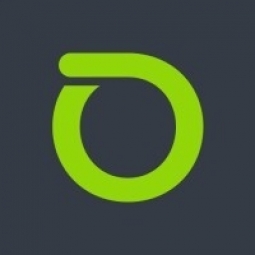公司规模
Large Corporate
地区
- America
国家
- United States
产品
- NETSCOUT solutions
- Arbor Cloud
- AED
技术栈
- DDoS Protection
- Data Analysis
- Hybrid Cloud Solution
实施规模
- Enterprise-wide Deployment
影响指标
- Digital Expertise
- Brand Awareness
- Cost Savings
技术
- 网络安全和隐私 - 网络安全
- 基础设施即服务 (IaaS) - 混合云
适用行业
- 药品
适用功能
- 商业运营
用例
- 网络安全
- 基础设施检查
服务
- 网络安全服务
- 云规划/设计/实施服务
关于客户
一家总部位于美国的制药公司生产用于治疗癌症、艾滋病毒/艾滋病、心血管疾病、糖尿病和关节炎等一系列疾病的处方药,该公司正在寻找 DDoS 保护解决方案。幸运的是,他们已经是 NETSCOUT 的服务保障客户,并且与我们以及我们的合作伙伴之一建立了信任关系。
挑战
该组织今年没有任何 DDoS 保护措施,也不认为他们受到的攻击如此频繁。他们听说针对其行业同行的 DDoS 攻击有所增加。他们还知道,去年整体 DDoS 攻击增加了 15%,并且 2020 年最后六个月的 DDoS 攻击数量和规模都有所增加。然而,作为一家制药公司,他们并不认为需要 DDoS 保护,因为他们没有在商业网站上开展业务,而且他们还没有遇到任何针对他们的 DDoS 勒索企图。
解决方案
适时,我们的共同合作伙伴让我们知道了针对他们的一个数据中心发生的一次小规模攻击。NETSCOUT 团队向我们的 ASERT 团队请求攻击数据,以确定攻击的对象、内容、地点和时间,并将这些数据与来自客户 ISNG 探测器的其他数据相关联,以清晰地了解当前正在攻击其系统的攻击类型。此分析帮助 NETSCOUT 团队向客户展示了潜在风险以及拥有一些 DDoS 保护的价值。他们还传达了这样的信息:DDoS 保护不仅要保护电子商务网站,还要保护基础设施,以便使用互联网的应用程序和服务能够继续运行和可用,从而使使用这些应用程序的员工能够继续为企业创造效益。
运营影响

Case Study missing?
Start adding your own!
Register with your work email and create a new case study profile for your business.
相关案例.

Case Study
Case Study: Pfizer
Pfizer’s high-performance computing software and systems for worldwide research and development support large-scale data analysis, research projects, clinical analytics, and modeling. Pfizer’s computing services are used across the spectrum of research and development efforts, from the deep biological understanding of disease to the design of safe, efficacious therapeutic agents.

Case Study
Fusion Middleware Integration on Cloud for Pharma Major
Customer wanted a real-time, seamless, cloud based integration between the existing on premise and cloud based application using SOA technology on Oracle Fusion Middleware Platform, a Contingent Worker Solution to collect, track, manage and report information for on-boarding, maintenance and off-boarding of contingent workers using a streamlined and Integrated business process, and streamlining of integration to the back-end systems and multiple SaaS applications.

Case Study
Process Control System Support
In many automated production facilities, changes are made to SIMATIC PCS 7 projects on a daily basis, with individual processes often optimised by multiple workers due to shift changes. Documentation is key here, as this keeps workers informed about why a change was made. Furthermore, SIMATIC PCS 7 installations are generally used in locations where documentation is required for audits and certification. The ability to track changes between two software projects is not only an invaluable aid during shift changes, but also when searching for errors or optimising a PCS 7 installation. Every change made to the system is labour-intensive and time-consuming. Moreover, there is also the risk that errors may occur. If a change is saved in the project, then the old version is lost unless a backup copy was created in advance. If no backup was created, it will no longer be possible to return to the previous state if and when programming errors occur. Each backup denotes a version used by the SIMATIC PCS 7 system to operate an installation. To correctly interpret a version, information is required on WHO changed WHAT, WHERE, WHEN and WHY: - Who created the version/who is responsible for the version? - Who released the version? - What was changed in the version i.e. in which block or module of the SIMATIC PCS 7 installation were the changes made? - When was the version created? Is this the latest version or is there a more recent version? - Why were the changes made to the version? If they are part of a regular maintenance cycle, then is the aim to fix an error or to improve production processes? - Is this particular version also the version currently being used in production? The fact that SIMATIC PCS 7 projects use extremely large quantities of data complicates the situation even further, and it can take a long time to load and save information as a result. Without a sustainable strategy for operating a SIMATIC PCS 7 installation, searching for the right software version can become extremely time-consuming and the installation may run inefficiently as a result.

Case Study
ELI LILLY ADOPTS MICROMEDIA’S ALERT NOTIFICATION SYSTEM
Pharmaceutical production is subject to a strict set of enforced rules that must be adhered to and compliance to these standards is critically necessary. Due to the efforts of WIN 911’s strategic partner Micromedia, Lilly was able to adopt an alarm notification infrastructure that integrated smoothly with their existing workflows and emergency hardware and protocols. These raw energy sources enable the industrial process to function: electricity, WIN-911 Software | 4020 South Industrial Drive, Suite 120 | Austin, TX 78744 USA industrial steam, iced water, air mixtures of varying quality. Refrigeration towers, boilers and wastewater are monitored by ALERT. Eli Lilly identified 15000 potential variables, but limitations compelled them to chisel the variable list down to 300. This allowed all major alarms to be covered including pressure, discharge, quantity of waste water discharged,temperature, carbon dioxide content, oxygen & sulphur content, and the water’s pH.









